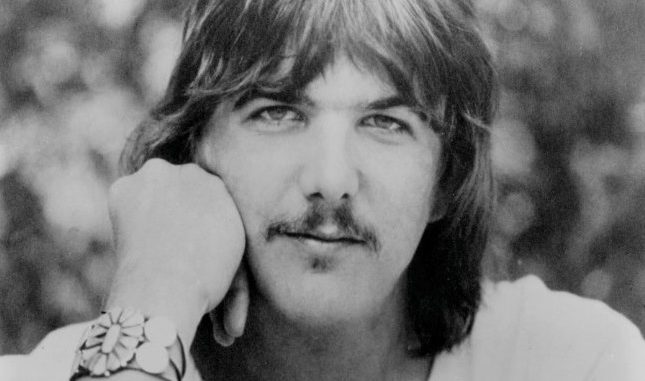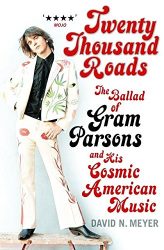
 A quick look around Good Reads finds twelve biographies that are either directly about Parsons, or about the bands he was part of. So, if we are picking one source to learn about Gram Parsons why this one?
A quick look around Good Reads finds twelve biographies that are either directly about Parsons, or about the bands he was part of. So, if we are picking one source to learn about Gram Parsons why this one?
If you search up Gram Parsons on Americana UK, there are thirty-four pages of entries. What is striking though is that there is relatively little writing directly about him. Most of it is references in passing. ‘Sweetheart of the Rodeo’ and ‘The Gilded Palace of Sin’ have been featured in our Classic Albums strand, but not any of his solo works. He was also quoted by many writers in our enquiries into What Is This Americana Thing Anyway? The series that he features in most strongly, however, is Top 10 Americana Albums of the 21st Century. In one of the few pieces specifically about Parsons from last year I said: “In much the same way that everyone who bought the first Velvet Underground album formed a band, it seems that Parsons spoke to musicians but not necessarily always to the casual listener.” His regular appearances in a series focusing on music of the last 20 years seems to bear that out.
The story of Ingram Cecil Connor III has not yet generated a proper biopic (we’ll leave ‘Grand Theft Parsons’ to one side), but I’m sure it’s only a matter of time, and Meyer’s book will be the place for the screenwriters to start. It covers the journey from inherited wealth and privilege, through the death of his father, family alcoholism, to the drift towards music that started with seeing Elvis play in 1956.
Reading the succession of soap opera episodes, we are left with the impression that if Parsons was young in the early 21st Century he would have gone into TV, not music. Meyer describes in exhaustive, and sometimes exhausting, detail Parsons’ encounters with his family, who come across as eccentric at best, witness his stepfather Robert Parsons’ pet Ocelot and the feuding that would have secured them a reality show of their own in later times. With many aspects of Parsons’ life obscured by time, drugs, and the differing agendas of those telling the tales, Meyer does a good job of sifting out the obvious fiction and giving his opinion of the most likely course of events. The “did they, didn’t they” question of Emmylou Harris’ relationship with Gram is concluded with an “almost certainly not.”
The people who slipped into his life for a while all came away marked by the meeting. One of the best stories is that of Dr Sam Hutt, a GP who specialised in heroin rehabilitation. He was so influenced by his interactions with Gram and their conversations about music that he embarked on a second career as Country singer Hank Wangford.
Meyer maps out the connections that influenced the course of Parsons’ life. He describes vividly the almost global subculture that people like Keith Richards moved in, from Europe to the US, to Morocco. Richards introduced him to Phil Kauffman, the other half of the infamous “death pact.” The story of Parsons’ death is unpicked and the traditional villains, especially his friends Margaret Fisher and Dale McElroy, are largely exonerated from neglect and blame. This is mainly because Meyer interviewed them and found a tale of mishap and accidental overdose. The story of the “cremation” is treated as the rather sordid mess that it doubtless was, and Kauffman is painted as someone “you would not want in charge of your life.”
Does Gram Parsons matter in Americana? David Meyer’s book says “yes,” but it was his often destructive influence that created an environment for other people’s music to blossom. Chris Hillman is the key witness for the prosecution here, and Meyer’s interview with Pamela Des Barres points out that Hillman wrote and sang harmonies with Parsons, ran the bands, but has not had the credit he deserves for the Byrds’ or Burrito’s music. Meyer describes him as “foremost amongst the Bitter Lieutenants, but [he] has good reason to be.” A review at the time this book appeared in 2007 says that “the songs endure.” True, but the genuinely classic songs which Parsons is remembered for were as Meyer points out, largely the work of others. Hillman, Chris Etheridge, and more. Even ‘Return of the Grievous Angel’ from which the book takes its title was a co-write. The influence that we find in our Top 10 Americana Albums of the 21st Century, could often be ascribed to people other than Parsons.
The overriding message we take away from reading ‘Twenty Thousand Roads’ is that Gram Parsons, far from being the giant on whose shoulders others stood, was a catalyst, a conduit who helped to focus greater musical talents than his. Unlike some other more starry-eyed biographies David N Meyer has stripped away the myth and the music and left us with the man.


